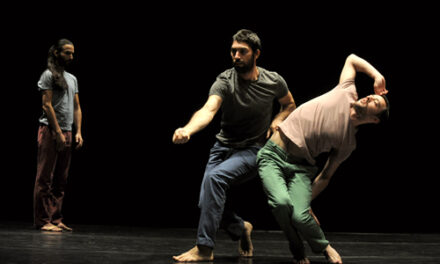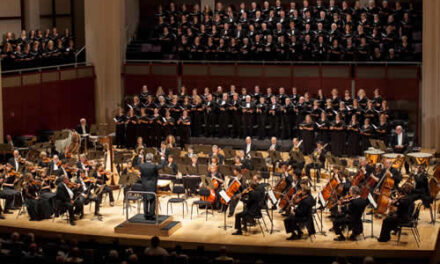Throughout the centuries, from the tarantella to the tango, dance music has remained an integral and vital part of every culture. The North Carolina Symphony, conducted by Sarah Hicks in Meymandi Concert Hall, featured a program of music from the 19th and 20th centuries, complete with Saint-Saëns’ Piano Concerto No. 2 performed by Valentina Lisitsa. Borodin’s “Polovtsian Dances” from Prince Igor, Debussy’s “Prelude to the Afternoon of a Faun,” and Stravinsky’s Suite from The Firebird contributed to an afternoon full of sweeping music and attractive rhythms.
The conductor explained beforehand that each movement of the piano concerto represents a certain dance style: the opening of the first movement is reminiscent of a Baroque prelude, the second is a scherzo (aptly named Allegro scherzando), and the last displays the characteristics of a lively tarantella. These vibrant characteristics were conveyed excellently by Lisitsa and the orchestra.
Known for her confident tone and virtuosity, Valentina executed the first movement, Andante sostenuto, with her characteristic power, conviction, and control of the instrument. The orchestra responded to her phrasing, nuances, and dynamics superbly; the conductor and pianist worked well together to put the piece across effectively. Lisitsa’s tone in the second movement was beautiful although, at times, one could have hoped for more projection, particularly in the long passages of fast, quiet notes. The third movement, notoriously tricky from a technical standpoint, came across slightly rough on the part of the pianist, but the rhythmic integrity stood, and the orchestra executed its part confidently. The repeated triplet figures in the bass section of the piano were muddy (as were the same figures in the string section), but when Lisitsa played the same passages in a higher register, they came out clearly and felt distinctively whimsical, rhythmic, and dance-like. The concerto ended solidly, with powerful, rhythmic chords on the part of both soloist and orchestra.
The “Polovtsian Dances” come from the opera Prince Igor. The enchanting character of the piece comes from its repetitive rhythm. Hicks conveyed the almost whimsical character of the piece well, and the sections of the orchestra listened commendably to each other when they traded the melody back and forth in a question-answer format. The woodwind soloists played the improvisatory lines gracefully and naturally.
The finale of the afternoon, the Suite from The Firebird ballet, was well-suited to the conductor, who used specific gestures, rhythmic drive, and suspenseful dynamics to evoke the fiery, exciting mood from the orchestra. Most of the trumpet solos in the third movement were beautiful, clear, and strong. The fourth movement used a wide range of dynamics to add to the excitement. The last note was performed with a punch and left a lasting statement in the ears of the audience.
The only piece that did not captivate impressively was Debussy’s “Prelude to the Afternoon of a Faun,” used in the ballet, The Afternoon of a Faun. The subtle, magical intricacies of the lyrical piece seemed lost on the audience, and the interpretation remained rather flat. However, the dynamic ending of the Firebird Suite made up for some of the less powerful qualities of the Debussy. It was a fantastic end to a rhythmic afternoon full of lively and beautiful dance music.












